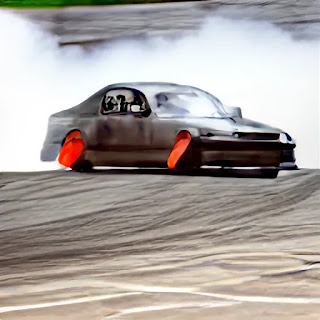The car looks wonderful, and you just picked it up from the mechanic after having it aligned. Despite this, you notice that there continues to be a little tug in one direction. You've chosen to bring the car in for additional maintenance because of the serious problem.
There are two reasons an alignment change might not have stopped your car from tugging.
The tire pressure is too low is one of the issues. This is by far the most common underlying factor. The tire will sag if the tire pressure is too low since there is insufficient air pressure to support it. The wheels will start to pull to one side as a result.
We hope the links on this page will benefit you before you continue reading. Please click on one of the links on this page and then make a purchase.
When the front tires degrade more quickly than the rear tires [or vice versa], this is another element that causes tugging.
Alignment inspections are a crucial component of vehicle maintenance. The most common causes of your car pulling to the left or right will be discussed in the following paragraphs, along with possible fixes. Along with that, we'll go over the many alignment-checking options you have at your disposal.
Vehicle Alignment: What Is It?
A crucial element in maintaining your vehicle's continued safe and efficient running is the procedure known as "alignment." Moving each wheel about the positions of the other wheels aims to achieve the best handling performance while keeping the most stability.
Your car may encounter several problems when its wheels aren't properly aligned, such as the following:
The steering wheel is vibrating.
Brake Wear
Unsteadiness and trouble are turning the wheel.
Wear-and-tear parts of the suspension
The suspension system will only be able to absorb shocks if the car's wheels are properly aligned effectively. Unwanted vibrations may be produced as a result.
By properly aligning the steering wheel, you may drive a stable vehicle you can control in the direction you want.
Car drifting to one side even after alignment
Unfortunately, realigning the wheels and maintaining the recommended tire pressure is sometimes enough to stop an automobile from pulling to the left or right. The technician likely overlooked the "crown" of the road if you're still experiencing pulling.
The crown is essentially a slope that facilitates drainage. Because flat surfaces prevent water from flowing off them and increase the probability of flooding, engineers never construct highways on them. Even if it's quite unlikely, it's still possible that the wheel alignment specialist hasn't thought about this.
The likelihood of a worn component in the vehicle's steering or suspension is much higher. If this is the case, the automobile will still lean to one side, no matter how much the wheel alignment is adjusted. It is highly advised that you speak with an expert mechanic in a circumstance like this.
Tire air pressure:
Sometimes adding a little fresh air to the mixture is all needed. The pressure in your tires may fluctuate as you drive, and it's likely that one of them will be underinflated compared to the others at any given time. The first thing you should do if you notice that your car is tugging to one side is check the air pressure in your tires and add extra air if necessary.
It's great if this helps you solve the issue. The problem can be more serious than you initially believed if you continue to notice your car sliding to the left or right.
Tire conicity:
Tire conicity is a phrase used to describe a problem that might happen while making tires. During the production process, one of the parts may go out of alignment, causing the tire tread rubber to solidify in an irregular shape instead of the intended cylinder shape. This may compromise the safety of drivers. As a result, your car will drift to the side of the road, where the damaged tire is. New tires exhibit this type of conicity immediately, and warranties will cover it if it does.
Suppose you begin to detect a pull in your tires after driving several thousand kilometers. In that case, it is most often the result of uneven wear brought on by the driving environment (such as slick winter roads) or a suspension problem. We can diagnose the problem more precisely if you bring your car in.
How frequently should you have the alignment of your car checked?
Having the wheels aligned on a vehicle after several months or years of inactivity is crucial. To avoid paying for pricey repairs, inspecting them during the annual routine maintenance is crucial.
Numerous factors, including poor road conditions, incorrect wheel alignment, and incorrect tire inflation pressures, can contribute to alignment issues. For example, checking the steering alignment will help you fix the problem if the car pulls to one side when you drive it.
There are three ways to align wheels: manually, with a computerized alignment system, or by combining the two. Computerized alignment systems are entirely automatic and do not require user input.
Readings of the actual positions of the wheels are taken, and the angle between each wheel and the reference points is calculated so that they can operate as intended.
To manually align a vehicle, the thrust line, the centerline of the vehicle, the other four wheels,
and the centerline of each wheel must all be measured.
Although a vehicle pulling to the left or right is not a major issue, it can be very annoying if you can't stop it. Therefore, it is imperative that you perform checks and check the alignment of your car on a regular basis.

Comments
Post a Comment